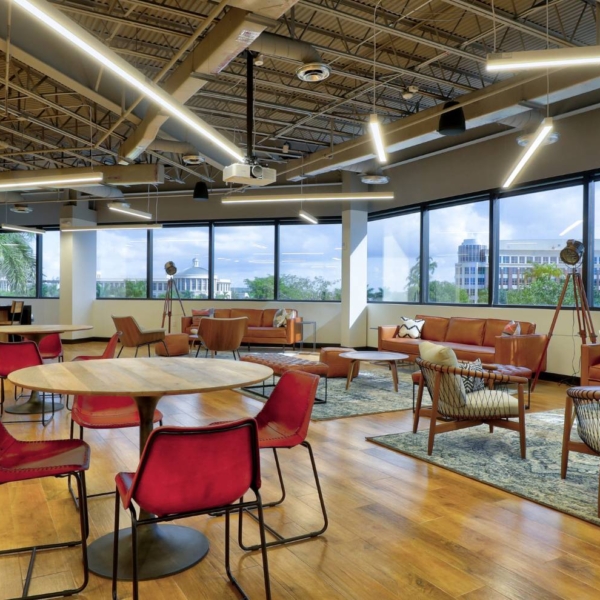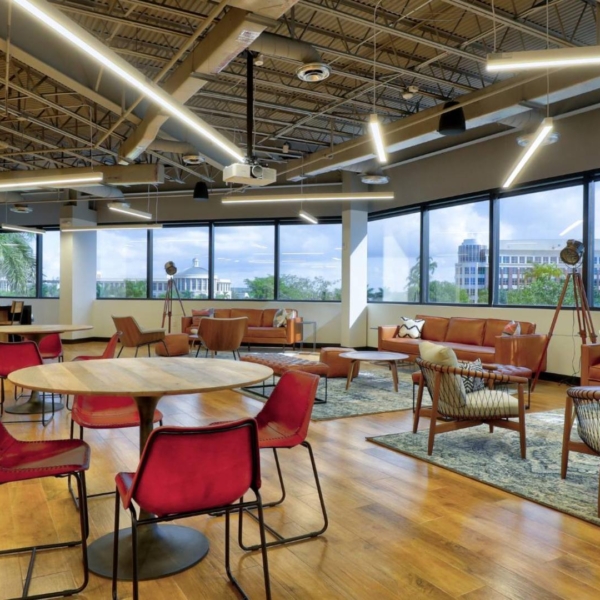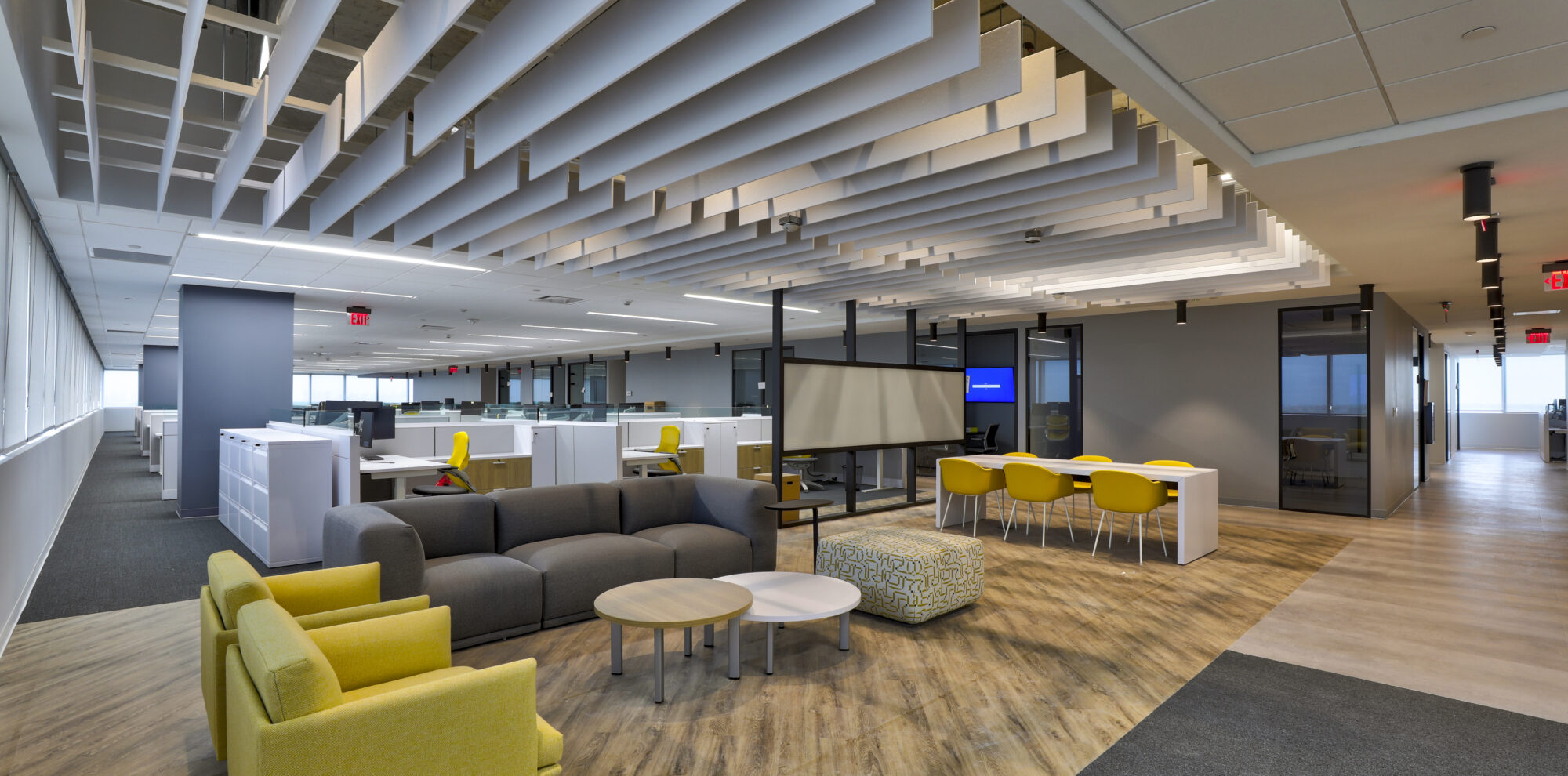On this page, we’ll discuss what to anticipate when engaging a Healthcare Construction Company, how good Healthcare Construction Company ensures quality work, and more!
Intro To Healthcare Construction Company
Selecting the right healthcare construction company is pivotal, as it ensures that your medical facility meets stringent regulations and caters to the unique needs of patients and staff. The process involves meticulous planning, specialized knowledge, and a commitment to safety standards. When engaging with such a firm, anticipate a partnership that prioritizes functionality alongside aesthetics for environments that heal. A reputable healthcare construction company brings expertise in navigating complex projects from conception through completion while adhering to critical timelines.
Working with these professionals offers an assurance of quality craftsmanship tailored to the intricacies of healthcare services. They utilize cutting-edge technology and innovative methods to deliver structures capable of accommodating advanced medical equipment and providing comfort for caregivers and those they serve.
What Services Can You Expect from a Healthcare Construction Company?
Healthcare construction company specialize in creating facilities tailored to the needs of medical services. They offer various healthcare construction services, each critical to developing functional, safe, and compliant healthcare environments.
A primary service is designing medical facilities. This involves architects and engineers who understand healthcare operations. They plan layouts that promote efficient workflows and patient privacy. Companies may also provide interior design aimed at creating calming spaces for patients.
Another critical service is the actual construction of healthcare buildings. This includes new builds, expansions, or renovations of existing structures. The focus is on using materials that ensure durability and hygiene in high-traffic areas.
Project management forms an integral part of these services, too. It ensures projects stay on track with timelines and budgets while adhering to strict health codes.
Some companies might offer specialized services like:
- Installation of medical gases
- Creating digital infrastructure for telemedicine capabilities
- Implementing sustainable building practices
Any chosen company must have experience with the complex regulations governing healthcare facilities.
When selecting a healthcare design and construction partner, consider their portfolio carefully. Look for evidence of:
- Compliance with health standards
- Ability to handle complex installations
- Experience in designing patient-centered spaces
The right company will construct buildings and contribute positively to patient outcomes through thoughtful design.
Why Choose a Specialized Healthcare Construction Company for Medical Projects?
Selecting a specialized healthcare construction company is crucial. These firms understand the complexities of construction of healthcare facilities. They offer expertise that general builders may need to gain. This knowledge ensures medical projects meet specific standards.
Healthcare projects require adherence to strict codes and regulations. A specialized firm knows these well. They ensure that all aspects of construction comply with health and safety laws. This includes air quality, infection control, and patient privacy concerns.
A key benefit is their experience in designing patient-friendly spaces. Such companies employ evidence-based design principles. These create environments promoting healing and reducing stress for patients, families, and staff.
Moreover, choosing an expert in healthcare construction minimizes risks associated with project delays or cost overruns often seen when less experienced contractors tackle complex healthcare projects.
- Expertise in regulatory compliance
- Experience in creating healing environments
- Reduced risk of project delays
- Minimized potential cost overruns
Working with a specialized company also offers access to the latest innovations in healthcare technology infrastructure.
They can integrate advanced systems into your facility’s design from the start. Think of electronic health records or telemedicine capabilities—vital in modern healthcare delivery.
Why Opt for Sustainable Practices in Healthcare Facility Construction?
Cost Efficiency
Sustainable practices in healthcare facilities construction are beneficial for the environment and economically advantageous. Facilities can significantly reduce operational costs by integrating energy-efficient systems, such as LED lighting and advanced HVAC technology. For example, a hospital that installs solar panels may experience lower electricity bills over time.
These measures often come with higher upfront costs but result in long-term savings. A healthcare construction company specializing in sustainability will understand how to balance initial investments with future cost reductions.
Patient Wellness
The design of a healthcare facility impacts patient recovery and wellness. Natural light, improved air quality, and green spaces have been shown to accelerate healing processes. Incorporating elements like large windows or indoor gardens can make a substantial difference when constructing or renovating new facilities.
Patients benefit from environments that promote health beyond medical treatment alone. This approach aligns with healthcare providers’ goals to offer comprehensive care.
Environmental Impact
Healthcare facilities are significant consumers of energy and resources. Adopting sustainable construction methods reduces the environmental footprint of these buildings. Using recycled materials and waste reduction strategies exemplify how companies can minimize adverse ecological effects.
A responsible healthcare construction company prioritizes eco-friendly options throughout their projects, benefiting clients and the planet.
Regulatory Compliance
Governments worldwide are imposing stricter regulations on building emissions and energy usage. Sustainable practices help ensure compliance with these evolving standards. Failure to adhere could result in fines or penalties for healthcare institutions—a risk easily mitigated by choosing forward-thinking construction services.
Compliance is not just about avoiding penalties; it’s about being part of global efforts towards sustainability within the industry.
What Role Does Compliance with Health Regulations Play in Medical Construction?
Compliance with health regulations is crucial in medical construction. Healthcare construction companies must adhere to strict standards. These standards ensure safety and efficiency within healthcare facilities. Healthcare general contractors are responsible for understanding these regulations.
Medical facilities have unique requirements compared to other buildings. They need specialized ventilation systems, easy-to-clean surfaces, and durable materials that can withstand heavy use. A healthcare construction company ensures that all these factors meet the required codes.
Building a hospital or clinic involves numerous regulatory bodies. Each has its own set of rules and guidelines that must be followed meticulously. Failure to comply can lead to fines, delays, or even closure of the facility.
For example, operating rooms require specific air filtration systems to maintain sterility. Patient rooms need designs that reduce infection risk while providing comfort and privacy.
- Ventilation: Ensures removal of airborne pathogens.
- Surfaces: Must resist bacteria growth and be easy to disinfect.
- Materials: Need durability for high-traffic areas.
These aspects are not just about meeting codes; they impact patient outcomes directly.
Another key role played by compliance is maintaining the trust of patients and staff. When people know a facility meets rigorous health standards, they feel safer using it.
Healthcare general contractors also work closely with designers who understand medical workflows. This collaboration results in spaces that support both patient care and staff efficiency.
Efficient design reduces stress on healthcare workers by minimizing unnecessary movement or confusion caused by poorly planned spaces.
In this context:
- Efficient layouts improve workflow.
- Compliant designs inspire confidence among users.
Moreover, compliance extends beyond initial construction into ongoing maintenance operations as well.
A reputable healthcare construction company will also stay updated on changes in health regulations since updates occur frequently due to technological advances or new research findings related to public health concerns such as pandemics or antibiotic-resistant bacteria outbreaks.
How to Evaluate the Credentials and Expertise of Healthcare Construction Firms?
Evaluating a healthcare construction company credentials is crucial. Start by checking their license. A licensed firm meets legal requirements to operate in your area. Also, verify if they have special certifications, like the American Society for Healthcare Engineering (ASHE) certification.
Next, assess their experience with healthcare projects. Look at their portfolio for similar completed works. This shows their understanding of complex medical environments.
Consider how well they adhere to health regulations from previous projects. Their compliance history indicates diligence and expertise in navigating healthcare standards.
Research client testimonials and reviews as well. Satisfied clients often highlight a company’s reliability and quality artistry.
Lastly, examine the firm’s safety record. A strong safety history suggests responsible practices on site, essential in sensitive medical settings.
- Check for proper licensing
- Seek special certifications relevant to healthcare construction
- Review portfolios for similar project experience
- Investigate adherence to health regulations
- Read client testimonials and reviews
- Examine the safety record
To gauge expertise, look into how long they’ve been in business and the types of facilities built. See if they’ve handled projects like hospitals or clinics successfully before.
Ask about innovative solutions used in past constructions, too—modern technology can improve efficiency during building processes.
- Determine years active within the industry
- Identify a variety of medical facilities constructed
- Inquire about innovative technologies implemented
While cost is essential, choosing a critical infrastructure development partner shouldn’t be your only consideration.
What Are the Benefits of Prefabrication and Modular Construction in Healthcare?
Cost Efficiency
Prefabrication and modular construction can significantly reduce costs for healthcare facilities. These methods allow building components to be manufactured off-site in a controlled environment. This approach minimizes waste materials, leading to direct cost savings.
By streamlining production processes, these techniques also cut down on labor expenses. Workers can complete tasks more quickly without weather delays or onsite constraints. The economic advantages are apparent when comparing traditional construction timelines with prefabricated modules.
Time Savings
One significant benefit is the reduction in construction time. Modules are built simultaneously as site foundations, speeding up overall project completion. A healthcare construction company specializing in these methods delivers projects faster than through conventional means.
This swift turnaround is essential for medical institutions needing urgent expansions or renovations. Faster project delivery allows healthcare providers to serve their communities without prolonged disruptions.
Quality Control
With prefabrication, quality control becomes more accessible due to the factory setting of assembly lines. Consistent conditions ensure that each component meets high standards before reaching the construction site.
Modular units undergo rigorous testing before installation, reducing the potential onsite arising from traditional building practices.
Flexibility and Scalability
Healthcare needs often change rapidly; modular buildings offer an adaptable solution here. Facilities can expand or modify with minimal fuss by adding or removing modules as required. This flexibility makes it ideal for hospitals that need temporary structures during peak times like flu season or pandemics.
Moreover, scalability ensures long-term adaptability for growing health service demands within communities over time.
Sustainability
Prefabricated components promote sustainable practices not typically seen in standard constructions. Less material waste occurs since exact quantities are used during manufacturing. Transporting compact modules also has a lower carbon footprint than multiple shipments of raw materials needed for onsite builds. Onsite green benefits appeal especially to sectors keenly aware of environmental health impacts, such as healthcare organizations striving towards sustainability goals.
Why Opt for Design-Build or Integrated Project Delivery Methods in Medical Construction?
Traditional Healthcare design and construction methods often lead to extended timelines and budget overruns. In contrast, design-build and integrated project delivery (IPD) methods offer a more streamlined approach. These strategies involve close collaboration between all stakeholders from the project’s inception. This leads to greater efficiency throughout the healthcare design and construction process.
Design-build brings together designers and builders as one team under a single contract with the healthcare organization. This method fosters better communication since all parties work towards a common goal from day one. It reduces conflicts that typically arise when multiple contractors interpret plans differently. With everyone on the same page, miscommunication is less likely to lead to costly errors or delays.
Integrated Project Delivery furthers this collaboration by integrating designers, builders, owners, and operators into every project phase. IPD encourages joint decision-making, which can result in innovative solutions that meet clinical needs while staying within budget constraints.
- Benefits of these collaborative approaches include:
- Reduced time spent on conflict resolution.
- Streamlined decision-making processes.
- Improved risk management through shared responsibilities.
Design-build and IPD are well-suited for complex projects like medical facilities where functional design is critical to patient care outcomes.
Following the earlier prefabrication advantages, these methodologies complement modular techniques well by facilitating early planning stages essential for integrating prefab components into the overall building plan.
Healthcare facilities must adhere to strict regulations regarding safety, privacy, and accessibility, among other factors crucial to patient wellbeing. The collaborative nature of design-build/IPD ensures compliance with such standards from initial designs through final construction phases without last-minute alterations that could disrupt schedules or inflate costs.
What to Expect in Terms of Maintenance and Facility Management Post-Construction?
Maintenance and facility management become crucial after the completion of a healthcare facility. Healthcare construction services continue beyond project handover. A reliable healthcare construction company will ensure their work supports long-term efficient operations.
Post-construction, expect regular maintenance checks. These are vital for patient safety and regulatory compliance. Healthcare facilities must adhere to strict standards, hence the need for meticulous upkeep. A commercial construction company often guides in maintaining the new structure.
Facilities should prepare for routine repairs as well. Even with excellent craftsmanship, wear and tear is inevitable over time. Systems like HVAC, electrical, and plumbing require attention to function optimally.
The role of technology in post-construction care is growing, too. Many companies now integrate innovative systems during construction for easier monitoring later on.
Here’s what you can anticipate:
- Regular maintenance schedules
- Guidance on handling wear and tear
- Support with integrating technology
Maintenance tasks include cleaning air ducts or replacing filters in ventilation systems—key in preventing infections.
Alongside physical upkeep comes documentation management, another significant aspect of post-construction. Documentation ensures that all modifications or repairs align with initial designs and codes. A proper record helps streamline future renovations or expansions. It also aids compliance with health regulations, which demand precise records of all alterations to a facility’s structure or significant systems.
To summarize:
- Prepare for ongoing maintenance needs
- Anticipate routine repair works
- Embrace technological advancements aiding facility management
In terms of costs, plan your budget accordingly. Ongoing expenses arise from utilities, staff training on new equipment, and regular servicing contracts. Remember that investing in quality materials during construction can reduce long-term maintenance costs significantly.
Lastly, consider environmental sustainability when managing a healthcare property post-construction. Efficient waste disposal methods are essential not just ethically but legally, too. Energy-saving practices contribute both environmentally and financially by lowering utility bills over time.
Conclusion
Selecting a healthcare construction company is a critical decision that impacts the immediate project and healthcare facilities’ long-term functionality and compliance. The discussed sections have underscored the importance of specialized services, adherence to regulations, and innovative construction methods such as prefabrication and modular designs. Companies with proven expertise in sustainable practices and integrated project delivery models offer significant advantages in building environments conducive to healing and wellbeing.
As stakeholders in healthcare infrastructure, engaging with construction firms that demonstrate a robust understanding of medical facility needs is imperative. Evaluate their credentials rigorously to ensure your investment yields a facility capable of meeting the demanding standards of healthcare provision. Choose a partner that aligns with these principles to create spaces that foster health and efficiency for future generations.










